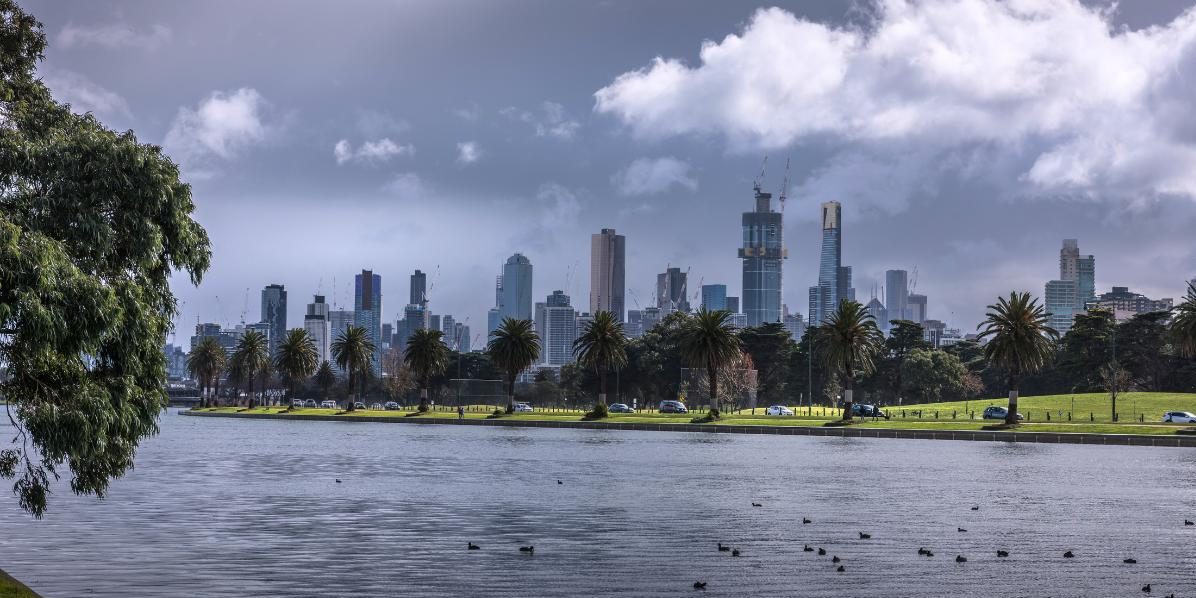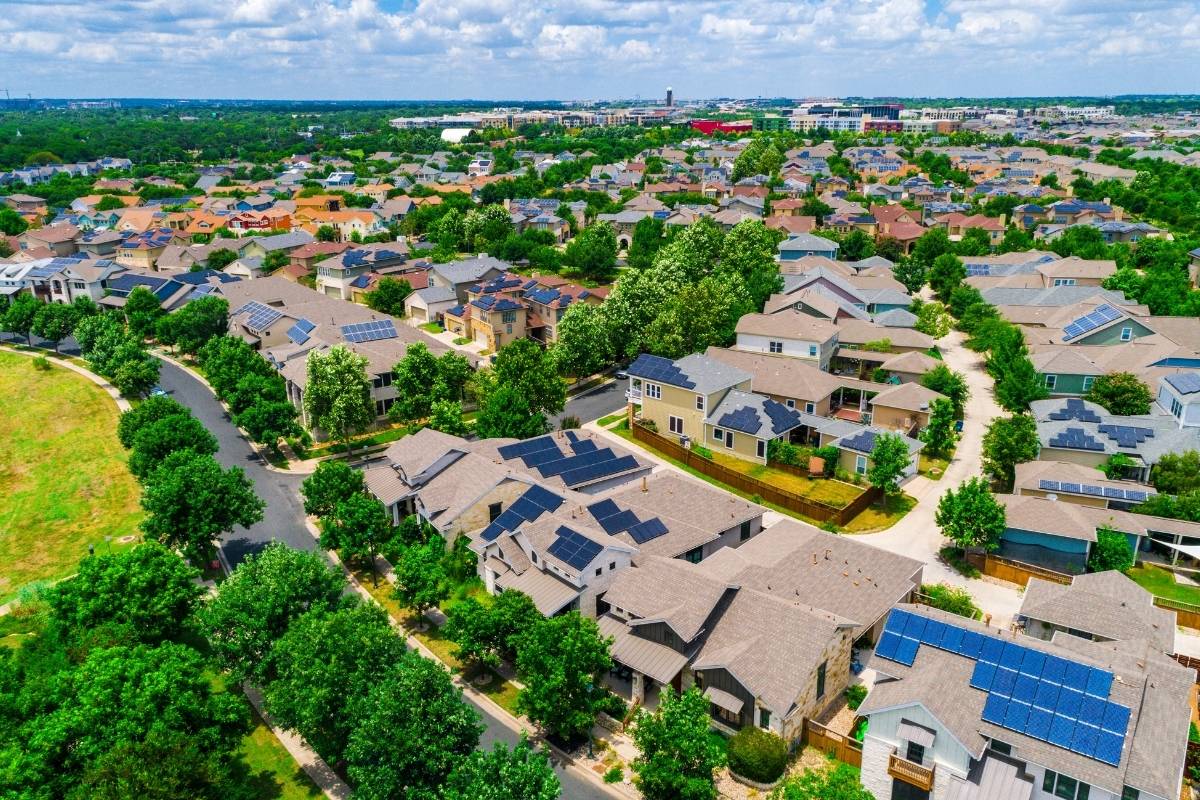The population in Melbourne continues to increase with a reported 5,316,000 residents recorded across the Metro Melbourne area in June 2024. As a result, the demand for housing in the state of Victoria continues to rise at a rapid rate. At the current rate that Melbourne is growing, supply and the availability of properties is unable to keep up with demand. Consequently, new residential developments have become a crucial part of managing this population growth.
However, with this residential expansion come potential risks to the environment, the ecosystem, and the community. This makes working towards sustainable solutions in building and infrastructure more crucial than ever. Those working in Melbourne’s residential construction industry need to carefully consider the impact their projects will have on the environment, both during the construction phase and into the future.
Sustainable residential development involves several key considerations. One of these is stormwater management—a crucial element in mitigating environmental impact and safeguarding public health. Stormwater management has become even more critical in recent years due to the effects of climate change, with severe weather events likely to increase. Much of Victoria’s existing infrastructure was not designed to withstand severe climate events. However, new developments offer an opportunity to integrate stormwater management strategies from the outset to mitigate risks. Taking action now will not only help urban designers to protect the properties in their developments, it will ensure these spaces are sustainable and eco-friendly in the decades to come.
Why Is Stormwater A Concern In Residential Areas?
In natural environments, rainwater primarily evaporates or is absorbed into the ground, becoming an essential source of nutrients for sustaining plants, trees, and wildlife. In built-up areas, however, hard surfaces prevent the natural evaporation and absorption processes seen in undeveloped areas.
The water in residential developments relies on stormwater management strategies implemented by developers to safely, efficiently, and effectively direct rainwater into the appropriate catchment systems. In these urban areas, stormwater often carries dangerous contaminants that can threaten community health. Effective stormwater management plans are crucial to prevent harmful runoff from reaching public water supplies and local ecosystems.
Poor management can lead to flooding, property damage, and public safety hazards, making it essential for developers to implement comprehensive stormwater strategies. Urban developers, in collaboration with local and state governments, need to address these risks with strategies that protect communities and the environment, both now and for future generations. This involves not only construction but also ongoing maintenance to ensure sustainability over time.
Stormwater Management Strategies And Guidance

The importance of appropriate stormwater management strategies is highlighted in Melbourne Water’s Stormwater Strategy which looks to promote a “sustainable, prosperous, liveable and healthy community” through smarter stormwater management strategies. While this guide is a key document that promotes a “sustainable, prosperous, liveable, and healthy community” through improved stormwater management practices, it is not the only guide for urban designers. Several other frameworks and guidelines are also available to support the implementation of Water Sensitive Urban Design (WSUD).
For instance, the City of Melbourne’s Integrated Water Management (IWM) Plans provide detailed strategies for incorporating WSUD into urban development. These plans promote distributed flood storage, the use of green infrastructure such as raingardens, and stormwater harvesting systems to enhance flood resilience and water quality. EPA Victoria’s Urban Stormwater Management Guidelines offer guidance on addressing key environmental risks associated with generating new impervious surfaces, covering pollutant loads and flow impacts on the environment.
These and other related documents create a holistic framework for sustainable urban water management, addressing not only flood mitigation but also ecosystem conservation and climate resilience. By integrating stormwater management strategies with Water Sensitive Urban Design (WSUD), they provide guidance on improving water quality, enhancing biodiversity, and adapting urban areas to climate impacts. Together, these resources promote resilient urban infrastructure that manages stormwater sustainably while supporting environmental health.
Water Sensitive Urban Design (WSUD) seeks to mimic natural hydrological processes by attenuating stormwater runoff, reducing both peak discharge rates and overall volume entering downstream waterways. This approach helps to minimize hydrological impacts such as erosion, flooding, and sediment transport. By controlling stormwater at the source, WSUD enhances infiltration, promotes groundwater recharge, and reduces pollutant loadings such as nitrogen, phosphorus, and suspended solids through mechanisms like biofiltration.
Key WSUD strategies include minimizing impervious surfaces to decrease runoff, and utilizing detention and retention basins to delay flow and improve water quality. The incorporation of green infrastructure elements, such as bioretention systems (raingardens) and bioswales, facilitates evapotranspiration and filtration, enhancing pollutant removal and stormwater retention. These systems also support biodiversity and improve microclimate conditions in urban environments. From an economic perspective, WSUD presents substantial cost efficiencies by reducing reliance on conventional hard-engineered drainage networks, thus lowering capital expenditures for large-scale infrastructure. By treating and managing stormwater at or near its source, WSUD reduces the need for extensive downstream treatment and mitigates risks associated with traditional stormwater management systems.
Some specific WSUD methods include:
- Raingardens and bioswales: These landscape elements filter runoff, removing pollutants before the water reaches natural waterways.
- Permeable pavements: By allowing water to infiltrate the ground, these surfaces reduce runoff volumes and promote groundwater recharge.
- Green roofs: Vegetated rooftops help absorb rainwater, reducing runoff and providing insulation that enhances building energy efficiency.
Applying For Stormwater Management Strategies Approval In Melbourne

In the Melbourne Metro area, it is generally a regulatory requirement to submit a stormwater management strategy to Melbourne Water for review. All submissions must demonstrate that the proposed development complies with Melbourne Water’s standards for drainage design, flood protection, and water quality management.
The submission typically involves pre-development planning that addresses drainage requirements, including provisions for flood mitigation, protection of waterways, and adherence to water quality protection standards. Melbourne Water’s guidelines, including the requirement for WSUD integration, ensure that developments contribute to sustainable stormwater management, flood risk reduction, and environmental protection
However, specific requirements may vary based on the size and nature of the development, so developers should refer to the most current Melbourne Water guidelines and regulations.
Planning permit applications will be required to include the following:
- A stormwater management strategy report outlining aspects such as catchment plans and computations.
- Supporting stormwater management modelling where applicable – this will include aspects such as hydraulic, hydrologic, and stormwater quality treatment plans.
- Staging and development plans which include various aspects such as the proposed timing of works.
- Details of the channel and outfall arrangements and proposals for out-of-sequence developments.
- Acceptance letters from council and affected downstream landowners for the outfall arrangements, as required.
This application process is designed to ensure that proposed developments align with Melbourne Water’s comprehensive guidelines on sustainable and effective stormwater management. While there are no fees associated with submitting the application, it is essential to adhere to the specific requirements and guidelines set forth by Melbourne Water. In accordance with the latest Melbourne Water’s service standards, the review process is thorough and typically takes approximately 28 days to complete.
During this time, Melbourne Water will assess the submitted stormwater management strategy to verify that it meets all necessary criteria. The assessment will consider various factors, including the adequacy of flood protection measures, the functionality of proposed drainage systems, and the overall impact on local waterways and water quality standards. It is essential for developers to engage with Melbourne Water early in the planning process to ensure compliance with these standards and to facilitate a smooth application process.
Seeking Assistance For Stormwater Management Strategies
Devising an appropriate stormwater management strategy involves careful consideration of numerous regulations, legal requirements, and specific development principles. Due to the complexities associated with stormwater management and water design, residential developers may benefit from partnering with specialised consultants. These professionals can provide the expertise necessary to navigate the regulatory landscape and develop effective strategies, for a smoother application and approval process.
DPM Consulting Group has been a trusted partner to urban developers and the broader Victorian community for over 35 years, helping create sustainable developments that prioritise public safety and environmental health.
Our team of specialised stormwater management engineers can guide clients through each stage of the design, ensuring all legal requirements are met and sustainable practices are implemented. We are dedicated to crafting strategies that not only comply with Melbourne Water’s guidelines but also promote long-term environmental sustainability. From the initial planning phase to the final execution, DPM provides comprehensive support, creating solutions that mitigate risk and protect both the community and natural ecosystems.
To learn more about stormwater management, water-sensitive urban design, and DPM’s consultancy services, click the link below.



